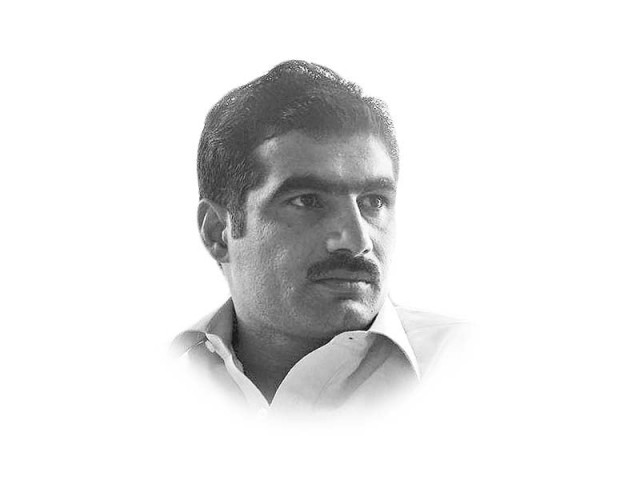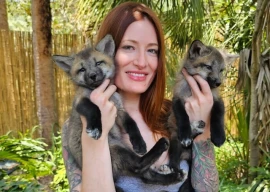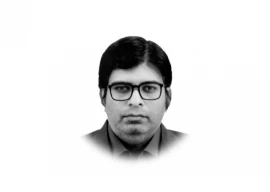
To start with, hawks, eagles and falcons have been used in falconry since times immemorial. Falconry is the art of catching quarry with trained species of the falcon in a sustainable manner. During the period when the use of pesticides, such as DDT, caused a considerable decrease in the peregrine population, falconers in the West developed techniques for domestic breeding of falcons to reintroduce them to the wild. Needless to say, the peregrine was saved from its near-extinction. The same techniques that were used to rescue it from extinction were also used in the case of the Californian Condor, the Mauritius kestrel and now, vultures.
Due to their remarkable qualities of speed and power, falcons have routinely been alluded to in literary works. Every time there’s a cricket match, for instance, we’d call our national players ‘shaheens’. The works of Allama Iqbal revolve around the majestic attributes of the shaheen. The same is true of the great Pashto poet, Khushal Khan Khattak, who was a professional falconer.
So why all the recent fuss on falconry? Where did things go wrong? Well, it all started with one unfortunate incident in January last year, when some 2,100 houbara bustards were allegedly killed by a Saudi dignitary in Chagai, Balochistan. The incident received widespread coverage in the local and international media and there was an outcry against the way hunting permits were issued by the government to falconers from the Middle East.
No sane person can justify a killing spree of that magnitude, perpetrated in a span of three weeks. Few, however, have bothered to ask about the modus operandi adhered to on the occasion. Even professional ornithologists and conservationists have for some reason overlooked the matter. Anyone, who has the slightest idea about the way falconry is practiced in the field, would instantly point out that it’s simply impossible to hunt that many game-birds with a handful of saker falcons. The whole episode, in fact, is a classic example of misinformation.
Falconry is a natural and sustainable form of hunting. It has been recognised by Unesco as the “intangible cultural heritage of humankind”. As far as the conservation of the houbara bustard is concerned, the raison d’etre of the Supreme Court verdict, all is not lost. Few people in Pakistan know that this year 600 adult houbaras were released in the Lal Suhanra National Park by the UAE-based International Fund for Houbara Conservation (IFHC). It was part of a bigger programme involving 6,000 houbaras, to be released in different countries. Using artificial insemination, well over 45,000 North African and MacQueen’s bustards hatched by the IFHC in its UAE, Morocco and Kazakhstan centres last year, were released into the wild.
Numerous falcon release programmes have been carried out in Pakistan during the past few decades by the same people from the Middle East, who are constantly being lambasted for their passion for falconry. Thanks to the efforts of such conservation programmes and breeding facilities, the houbara is no more an endangered species, as is usually claimed. Its population has been stable since 2004 and is growing steadily according to respected global organisations such as the IUCN and the WWF.
That the houbara is hunted by falconers for its aphrodisiac quality is an outright lie of cosmological scale. The ignorance of people in South Asia with respect to nature and its conservation is shocking. Last year, when security forces in Afghanistan shot a GPS-fitted houbara, it was instantly called a spy agent and people proudly posed for pictures with the poor creature. The fact of the matter was that the bird belonged to an IFHC research programme to track and monitor the bird’s migration pattern.
What’s needed is less emotionalism and politicisation of issues and a more dispassionate discourse. There’s a need for proper legislation and streamlining of the entire canon of wildlife rules and regulations, to curtail problems of smuggling, poaching and violation of law. Like Pakistan and the Middle East, the UK also has a long tradition of falconry and is home to well over 15,000 falconers. Due to the strict implementation of wildlife laws and state vigil, however, the falconer community there practices this millennia-old tradition in a balanced and nature-friendly way. Our state and its organs need to evolve such a mechanism as well.
Published in The Express Tribune, November 3rd, 2015.
Like Opinion & Editorial on Facebook, follow @ETOpEd on Twitter to receive all updates on all our daily pieces.














COMMENTS
Comments are moderated and generally will be posted if they are on-topic and not abusive.
For more information, please see our Comments FAQ